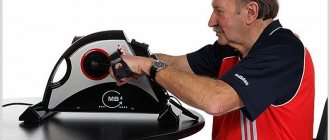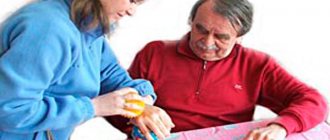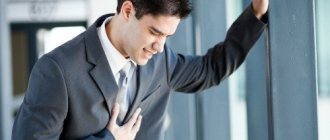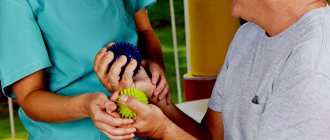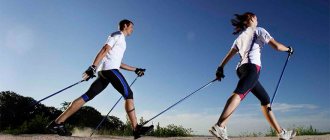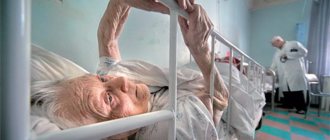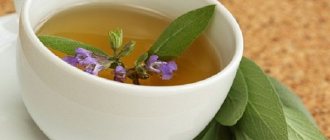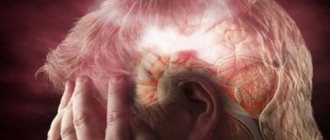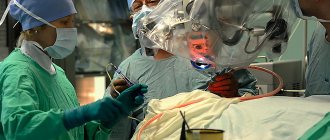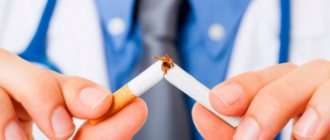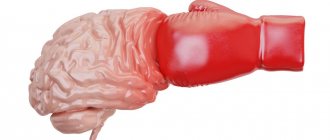Rehabilitation after a stroke should be comprehensive. One of the means of restoring motor activity is massage. It begins in the hospital and continues after discharge. Massage after a stroke at home is performed by a specialist or the patient’s relatives. It is important to follow the recommendations on the sequence and methods of mechanical influence, and gradually increase the duration of the session. The features of the procedure in patients who have suffered a stroke are discussed in detail in our article.
Stroke is a severe vascular pathology. The recovery period in such patients takes a long time due to the variety of complications that arise from impaired blood supply to brain tissue.
One of the most common is limb paralysis. If a stroke affects the left hemisphere, then the muscles of the right half of the body will suffer. In case of damage to the right hemisphere, the patient experiences a disturbance in the motor activity of the muscles of the left half of the body. Such patients require an integrated approach aimed at restoring motor functions.
How beneficial is massage for recovery after a stroke?
Massage is one of the key areas in the rehabilitation of patients who have suffered a stroke. Mechanical impact on areas of the patient’s body allows you to achieve:
- improving muscle tissue trophism and lymphatic drainage;
- normalization of muscle tone, preventing the development of contractures;
- reducing the severity of pain;
- gradual restoration of range of motion;
- prevention of bedsores;
- improving the general condition of the patient.
It is advisable to begin treatment procedures in the early recovery period and then continue at home.
Recommended sets of exercises for recovery at home
To enhance the effect of the main therapy, doctors may prescribe additional restorative methods. Such treatment measures include:
- muscle myostimulation - stimulation of blood circulation and metabolism, activation of muscle contractions due to irritation by electric current pulses;
- reflexology – stimulation of active points of the face in order to relieve excess muscle tension;
- magnetotherapy – elimination of neurotrophic disorders in paralyzed areas using magnets;
- acupuncture (acupuncture, acupuncture) – stopping destructive processes in the body, improving the trophism of affected muscle fibers, reducing the clotting of blood elements.
As a rule, the listed procedures are prescribed as you recover from a stroke. The number of procedures is determined by a specialist, taking into account the individual characteristics of the patient’s body.
You can hear the mysterious term “anaerobic gymnastics” from doctors. But behind the name lies only physical exercise after a stroke, during which oxygen consumption by tissues increases. In addition to the exercises prescribed by the doctor, patients are recommended the following types of anaerobic exercise:
- walking;
- cycling;
- swimming;
- dancing;
- moderate exercise in the fresh air (caring for flowers, decorating a personal plot, etc.).
After a stroke attack, it is necessary to train all parts of the body, but exercise therapy after a stroke is selected so that maximum correction of possible movement disorders occurs.
Balance and coordination exercises are necessary for people who have difficulty maintaining an upright position while walking.
Exercise therapy for stroke for balance consists of relatively simple movements:
- Standing, rest your hands on the back of the chair. Stand on 1 leg for half a minute, then change limbs. Gradually, the duration of standing should be increased to 2 minutes and not use your hands to maintain balance.
- The following coordination exercises will be a more complicated version of the previous movement - you need to not only raise your leg, but also move it to the side, holding the raised limb for a couple of seconds, then slowly lower it to the floor.
- Walking along one line. You need to walk, placing the heel of your right foot close to the toe of your left.
At first, relatives help you do exercises to restore balance, and then the person begins to train on his own.
Facial exercises after a stroke are necessary when paresis of the facial muscles persists and articulation is impaired.
In case of facial deformation due to paresis, it is recommended:
- alternately frown and raise your eyebrows;
- puff out one's cheeks;
- smile.
A useful exercise for the facial muscles is to make faces in front of the mirror, trying to make the halves of the face look the same.
Almost always, a violation of facial expressions is accompanied by difficulty in articulation. Then a set of exercises for the tongue and lips will help:
- move your tongue over your lips;
- grin, showing teeth;
- stick out your tongue, trying to touch your chin;
- fold your lips into a tube.
Such rehabilitation at home will not only allow you to restore facial expressions, but also get rid of slurred speech.
Gymnastics for the eyes
Paresis of the oculomotor nerve makes it difficult to focus the gaze and causes double vision. To eliminate this, you will need a special complex of exercise therapy:
- focus your gaze on one point and blink at regular intervals;
- change the direction of gaze first from right to left, and then from top to bottom;
- rotate the pupils first clockwise and then counterclockwise;
- close your eyes, squeezing your eyelids tightly for a few seconds, and then slowly open your eyes.
An important rule: eye exercises should not overwork the organ of vision. Eye exercises after a stroke are performed slowly, with a small number of repetitions, but the movements must be done 3-4 times a day. This will help restore the functionality of the extraocular muscles and nerves.
Rehabilitation exercises after a stroke necessarily contain exercises for the core. This is necessary to build up a natural muscle corset that makes it easier to maintain balance:
- Body rotations. It is necessary to turn the body in the lumbar region to the right and left. First, physical therapy is performed while sitting on a chair, and then, as the muscles strengthen, turns are done while standing.
- Tilts to the side. The situation is similar to that described above. You need to lower your left shoulder and bend slightly to the left, then straighten up and repeat on the other side.
- Bend forward. Raise your hands up and clasp them together. Slowly lean forward without changing the position of your upper limbs, and then return to your previous position.
It is recommended to perform therapeutic exercises for the body immediately after the massage, before complexes for the arms and legs.
Restorative gymnastics for the legs at home has 2 goals: restore muscle tone and increase the range of motion of the limb.
Exercise therapy for the legs includes the following movements:
- Walking. When doing walking exercises, you should march a little, raising your knees high, and then walk on your toes, heels and sides of your feet. The proposed movements to restore walking will not only strengthen all leg muscles, but also improve coordination.
- Strengthening the ankle. The following exercises to restore your legs should be done while sitting in a chair. You need to rotate your ankles first outward and then inward. Another exercise for the ankle joint: stretch your toes out as much as possible, “like a ballerina,” and then bend your foot, trying to pull your toes toward your shin.
- Sprained ligaments under the knee. You need to sit on the floor and slowly bend forward, trying to touch your toes with your hands and feeling how the hamstrings stretch. This is a good exercise to relieve spasticity in the lower leg, knee and hip.
- Stretching the hip tendons. You need to place a pad or small ball between your thighs and try to squeeze your legs despite the resistance of the ball.
It is important to remember that exercise performed after a stroke should begin with leisurely movements. Leg exercises are first performed at a slow pace, and then the rhythm of movements gradually accelerates.
Patients complain of weakness of the paralyzed arm and the inability to perform precise movements. Exercises for the arms after a stroke are conventionally divided into 2 groups: restoring muscle strength and improving coordination.
Gymnastics for restoring muscle performance at home includes a set of exercises:
- Lie on your back and fold your arms across your chest. If the right hand is not working well, then the left palm should lie on top of the right and vice versa. Raise your arms to the ceiling, stretching the sore limb with the help of the healthy one.
- Standing with your arms down, clasp your limbs together. Slowly lift your clasped hands up.
- Starting position as in the previous exercise. But the arms do not rise up, but bend and straighten at the elbow joints.
Such passive exercises for hand rehabilitation help improve blood flow in the limb and prevent stiffness in the joints. But, in addition to passive movements, active actions are required to develop the hand. In addition to physical therapy, patients at home are recommended to perform the following actions with their sore arm:
- Open and close doors with turning handles. This is a good exercise for the hand, strengthening the muscles and restoring fine motor skills.
- Turn the key in the keyhole. This movement is good for the fingers: it increases strength and coordination.
- Take objects with your hand (choose unbreakable ones) and carry them around the room.
It is recommended to do active exercise therapy for the arm during the day, performing the usual actions not with the healthy, but with the affected limb.
In addition to increasing muscle strength, it is necessary to restore fine motor skills, returning the fingers to the ability to perform precise movements. Doctors advise drawing, knitting and other precise work. When choosing the area of training for fine motor skills, you should take into account not only the capabilities of the limb, but also the personal preferences of the patient. When a person enjoys an activity, the recovery process will be successful.
Exercise therapy for ischemic stroke and hemorrhages in brain tissue are carried out in the same way. There is only one rule to remember: physical activity after a stroke increases gradually: patients should not overwork themselves while performing therapeutic exercises.
Breathing exercises are carried out depending on the person’s capabilities after a stroke:
- The strength of mobility on the right is impaired. At home, exercises are recommended for stroke on the right side, when movements of the affected limbs are done with outside help or using a healthy left hand. Gymnastics should be accompanied by measured deep breathing.
- Paresis on the left. Gymnastics for a stroke on the left side is carried out similarly to the previous option, but the person helps with the movements with the right hand. You should breathe deeply and evenly.
- Paralysis. If one or both sides of the body are completely paralyzed, then at home the recommended exercises for recovery are performed by relatives, making movements with the patient’s limbs. During the procedure, the paralyzed person is asked to take deep and even breaths.
Breathing will allow you to better saturate the blood with oxygen and reduce tissue hypoxia, and this will have a beneficial effect on subsequent rehabilitation.
In addition to exercise, to improve respiratory function, stroke patients at home are recommended to inflate balloons and perform other actions that are accompanied by increased lung function.
Various models of simulators have been developed for rehabilitation after a stroke: some are used at home, while others are used for recovery in hospitals. Let's see what exercise equipment can help after a stroke:
- Exercise bike. Simulates a bicycle ride. At the same time, the severity of pedaling and the speed of rotation are measured. It is useful not only for the legs - rotational movements of the lower extremities improve the muscle tone of the buttocks, lower back, abdominals and, partially, the arms. Suitable for home use – cycling training is useful at all stages of the recovery period.
- Verticalizer. Intended for bedridden patients with severe paresis. The design helps a person get used to an upright position again. Used in hospitals at the early stage of post-stroke recovery.
- Exoskeleton (Lokomat). Used for patients with severe muscle atrophy. The device is attached to the human body, performing the functions of an external skeleton.
- Machine. Exerciser for the hand after a stroke The machine improves the flexion-extension ability of the fingers. The device has 2 modes for the hand: automatic (the pace of forced movements is set) and mechanical, when the device “works” by pressing with a healthy limb.
- Bud. Exercise machine after a stroke The bud is commonly called a glove exercise machine. Designed for the hand, allowing you to improve hand function. The device looks like a glove with clamps attached to a rigid frame. The limb is placed in a “glove”, secured with straps and the device is driven by a portable electric motor. This simulator for fingers after a stroke is allowed to be used as an addition to active exercise therapy.
Panasonic Power Loader Exoskeleton
General rules (course duration and duration of one session)
At the initial stage, massage after a stroke should always be performed by a specialist. He individually determines the duration of both one session and the entire course.
The first procedures should not exceed 5 minutes, because the patient’s weakened body needs to get used to the mechanical effect on the muscles. Subsequently, the session time gradually increases to half an hour. The duration of the course usually does not exceed 30 procedures, followed by a 1.5-2 month break.
Restorative massage for stroke is done daily or every other day. Recommendations include:
- During the first three procedures, only the muscles of the shoulder and thigh are exposed to mechanical stress.
- If there are no contraindications, from the fourth session they begin to massage the distal limbs and pectoral muscles, without turning the patient over.
- Starting from the 8th session, the area of influence expands and covers the muscles of the back and lumbar region.
At the inpatient stage, all procedures must be carried out under the supervision of a doctor. This will reduce the risk of complications.
Types of massage events and methods of implementation
Speech therapy massage
Allows you to reduce salivation, improve the functioning of the speech apparatus and facial muscles. To achieve your goals, acupressure of the face and tongue is indicated.
Hands
Hand massage after a stroke makes it possible to relieve pathological muscle tension and restore the functional activity of the affected upper limbs.
Hand massage after a stroke is carried out using the following technology:
- The patient assumes a supine position. The arm is straight, the palm is open. It is important to fix the limb in this position with a bandage. The impact should begin with the pectoralis major muscle. With ischemic stroke and its hemorrhagic form, she is always in hypertonicity. It is necessary to carry out light stroking movements on the chest; vibrating, oscillating movements are acceptable, but not rough rubbing.
When can I start?
Often relatives of patients who have suffered a stroke ask: is it possible to do manual procedures in the first days after a vascular accident? This should be decided by a specialist. However, according to all recommendations, it is the early start of rehabilitation measures that increases the likelihood of restoration of motor activity.
- In case of ischemic nature of cerebral circulatory disorders, procedures can be started from the second day.
- If the stroke is hemorrhagic, then you should start rehabilitation no earlier than the sixth day.
In any case, the start of rehabilitation measures must be agreed with the attending physician.
What are the reasons for facial distortion after a stroke?
Sudden facial distortion indicates an ischemic or hemorrhagic stroke. Distortion in this disorder occurs for the following reasons:
- prosoparesis – partial loss of muscle strength in one half of the face;
- Prosoplegia is a complete loss of muscle strength in one half of the face.
With hemorrhoidal and ischemic stroke, the face becomes severely distorted in a short period of time. The changes are as follows:
- one corner of the mouth “goes” down;
- a crooked and unnatural smile appears;
- the outer corner of the eye on the affected side may “slide” down while the other eye remains the same;
- drooping of one eyebrow significantly lower than the other;
- change in the shape of the nose (the nostril on the affected side may “go” slightly upward);
- distortion of the oval of the face;
- the tongue will point towards the affected side if it is stuck out.
It is worth considering that it is usually the distortion of the mouth and tongue that is most noticeable. Changes in other facial features may not be as obvious.
Who can give a massage - a specialist or family?
It is necessary to start therapeutic massage after a stroke in a hospital. In this case, the procedure should only be carried out by a specialist, also under the supervision of the attending physician. In the future, when the patient’s condition returns to normal, manipulations can be performed by a relative of the patient who has studied the technique of mechanical influence.
After discharge from the department, rehabilitation measures must be continued. At home, the procedures can be performed by both a massage therapist and the patient’s relatives. There are many special video tutorials that will help beginners perform massage movements correctly.
Features of the event
Principles of conducting
- Massage should be done in the morning, before lunch.
- The first sessions should last no more than five minutes. Over time, you can increase the time to ten to thirty minutes.
- The patient's position is lying on his back or stomach. All muscles are as relaxed as possible. It is important that your upper torso is higher than your legs.
- Therapeutic massage after a stroke should begin with the upper body (from the head and neck to the lower extremities).
- In case of a stroke on the right side, the procedure should be carried out on the entire right side of the body, and vice versa, a massage in case of a stroke on the left side affects this half of the body.
- The process begins with exposure to the collar area of the spine. Hand movements are smooth, unhurried. There is no need to squeeze the muscles with all your strength.
- An exception to the previous rule is with hyperkinesis and hypertonicity of the muscle. In this case, strong rubbing movements are indicated, but only in 7-10 sessions, not earlier.
- The above rules are also valid for individual limbs. Thus, a leg massage begins from the thigh, the process for a paralyzed arm begins from the shoulder, etc.
- Sudden movements must be avoided.
- The massage therapist's passes should be rubbing to improve tissue nutrition. There is no need to immediately press through the deep layers of skin and muscle.
These recommendations must be strictly implemented. The therapeutic effect occurs after 5-7 sessions.
Preparatory activities
It is necessary to create comfortable conditions for the session. In the room where the massage will be performed, it is necessary to create a comfortable temperature regime, an atmosphere of silence and peace, since the main goal of the massage process is to relax the patient.
The massage therapist asks the patient to lie on his back. The head should be on a high pillow. The knees are bent and a cushion is placed under them. The process begins with relaxing healthy areas of the body, and only then moves on to the affected ones.
Features of the procedure
If massage is performed at home after a stroke, relatives can be given some important advice:
- During the procedure, hands must continuously touch the patient’s body.
- It is necessary to follow the massage technique and take into account that all the patient’s muscles are in different states. Even before the process begins, it is important to determine which muscles are toned, which are in normal condition, and which are hypertonic.
- Both healthy and damaged tissues should be massaged.
- If the right side is affected, start with the left, and vice versa.
- The same goes for limb massage.
- The process should begin with light stroking movements, only then apply effort. There is no need to force the massaging process.
- The above is true for determining correct differentiation. The more tense the muscles are, the more delicate the approach to massaging should be: start with stroking.
This way the sessions will be most effective. Especially if the massage is performed at home by the patient’s family members themselves.
At what point should you start?
A natural question arises: is it possible to do massage and when to start doing massage after a stroke? It is not only possible to do, but also necessary. You should start from the very first day after the onset of symptoms of acute cerebral ischemia. In a hospital setting, sessions begin immediately; at home, massage should be performed by relatives. This is important and seriously affects the prognosis: the earlier massage procedures begin, the more favorable the outcome.
It is important to note. It is best to clarify the technique of conducting sessions with the massage therapist from the hospital; do not hesitate to ask questions. Information on massage techniques should be comprehensive. This way errors will be eliminated.
Some recommendations for conducting sessions
The full course lasts 30 days, then the patient rests for 5-10 days and the procedure is repeated. Under no circumstances should you intensively work on the muscles from the very first days; this is dangerous, as it will provoke an increase in blood pressure. This is fraught with the development of a recurrent stroke. Massage is also important for preserving the functions of healthy limbs, which under conditions of prolonged physical inactivity will certainly undergo dystrophic changes.
Precaution
- In the early stages, sessions are carried out only by an experienced massage therapist, since there is a high risk of developing gross dysfunction of the body, swelling of the limbs after a stroke, etc. Massage after a stroke at home is acceptable, but only at a late rehabilitation stage (after a month and a half).
- The procedure takes place in a supine or lateral position. The patient should not be placed on his stomach unless there are interruptions in the functioning of the internal organs and heart.
- The movements are gentle, stroking. You cannot force the massaging process. This is fraught with muscle spasms and cramps. As has already been said, there is a time for everything.
- To achieve a greater effect, it is recommended to use special massagers with a rigid base, etc.
- Do not over-massage the affected areas, as this may cause pain.
Compliance with precautions will reduce the risk of unwanted “side” effects.
How to do a general body massage?
General massage is based on a combination of various mechanical effects on parts of the body. In this case, all movements are carried out along the course of the lymphatic vessels - from the distal sections to the center. The entire session can be divided into three stages:
- Elementary. This stage is characterized by minimal impact on areas of the body, most often performed in the form of stroking.
- Basic. The force of influence increases. Thanks to rubbing and vibration movements, blood supply to the affected muscles improves and their tone is normalized. Performing shock movements is contraindicated, as they can negatively affect the patient's condition.
- Final. At the end of the procedure, the massage therapist again reduces the intensity of the impact, moving on to stroking.
The effectiveness of the procedure can be increased with the help of special massagers used after a stroke during the rehabilitation period. They have a vibration effect on the muscles, providing a high degree of relaxation. The use of massagers at home should be agreed with your doctor.
Let us dwell in more detail on the basic massage techniques.
Massage techniques
When performing a massage, the sequence of actions must be followed, and the main techniques are stroking, rubbing and kneading, and light vibrations.
How to do a massage after a stroke: begin with light stroking movements. They are needed to warm up the skin and muscle tissue. They are used between different techniques and when changing intensity. The frequency of movements is no more than 20-25 per minute.
The effectiveness of stroking is to improve the movement of biological fluids. Rubbing allows you to use not only the skin, but also the fiber located underneath it. They represent deeper pressure, as a result of which blood flow is activated, local body temperature rises and the sensitivity of nerve endings is restored. Kneading is already an intense impact, with the help of which deep muscles are worked. It improves cellular nutrition of tissues, accelerates metabolic processes and triggers natural regeneration processes. The use of vibration improves the condition of the deep muscle layer and is necessary to consolidate the entire effect.
The massage session begins with healthy areas of the body.
All movements are directed from the shoulder girdle to the axillary lymph nodes or from the hand to the shoulder. When the arm is paralyzed, the pectoralis major muscle experiences prolonged stimulation of the nerve centers even without fatigue, so massaging begins with this area. On the affected side, movements should be light, circular, with moderate intensity.
The deltoid and trapezius muscles are worked from the spine to the shoulders with light pressure. Rubbing and kneading are carried out with increasing intensity. Then they move on to kneading the triceps and biceps in the direction from the elbow to the shoulder. You need to work with this area carefully, since the brachial artery and many nerve endings pass through it. The forearm is worked first on the outer side from the hand to the elbow. Then continue with the palms and fingers to restore tactile, motor and tactile activity.
Stroking
This technique is used at the beginning and end of the session. Stroking has a calming effect and reduces the severity of pain. It is performed slowly and rhythmically. If the applied force is weak, then this is a superficial stroking; as it increases, a deeper effect is achieved. The technique is performed with one or two hands. The trajectory of movements is arbitrary.
Trituration
When rubbed, a more intense effect on the skin, subcutaneous fat and muscles occurs. This technique allows you to:
- normalize the tone of both superficial and deep muscles, improve their contractility;
- increase the supply of oxygen and nutrients by increasing blood flow;
- establish lymph drainage.
Rubbing is accompanied by pressure, which forms a skin ridge. The technique is performed with the fingertips or the edge of the palm.
Technique
When performing massage in the post-stroke period, it is important not only to achieve positive dynamics in the patient’s condition, but also not to cause harm. Techniques used in massage:
1. Stroking - sliding movements, the pressing force of which does not contribute to the formation of folds on the patient’s body. This technique helps relieve pain and has a calming effect. It can be carried out with one hand or with both. They are used at the beginning of the massage and at its final stage. Strokes are distinguished by strength:
- superficial (relieve muscle hypertonicity, stimulate metabolism of the epithelium and in the subcutaneous fat layer);
- deep (activate blood circulation, prevent the accumulation of fluids).
2. Rubbing . The technique is to move your hands in different directions, involving pressure, while forming folds on the skin. The trajectory is straight or circular. Technique of execution - with the edge of the palm or fingers.
Features of massage
It is important to follow the order of the muscles being worked during the session. The following method is considered the most effective:
- The session begins with the anterior surface of the injured lower limb. They work on the foot, gradually moving up to the thigh.
- After the leg, a mechanical effect is applied to the pectoral muscle on the affected side.
- They knead the arm, also starting from the distal sections.
- Having worked the front surface of the body, the patient is asked to roll over onto his healthy side. Warm-up the back surface begins with the leg - from the shin to the thigh.
- The session ends with an impact on the muscles of the back and lower back.
A little about preparation
You can’t immediately put stress on fragile muscles. Before starting exercise therapy for a stroke, a person must first be prepared. This requires a massage.
It is not necessary to resort to the services of a massage therapist; you can carry out the procedure yourself:
- stroke the neck and shoulder girdle;
- move from the shoulders to the back, performing stroking and moderate tapping;
- stroke and rub the pectoral muscles;
- Massage your arms and legs from top to bottom, from the thigh or forearm to the fingers.
Massage movements are performed first on healthy parts of the body, then the affected side is massaged. After the massage, you can move on to physical therapy exercises after a stroke.
Thigh massage
The thigh begins to be massaged from the front and inner surface from the knee upward. All stages of the procedure are followed, starting with stroking, then moving on to rubbing and vibration. Each technique is repeated several times.
After exposure to the front and inner surfaces of the thigh, the patient is turned over, thereby making it possible to massage the back of the leg. The intensity of the procedure is low, since the extensor muscles are often in spasm. The session is limited to stroking, which is performed from the popliteal fossa to the lower back.
Foot massage
During this procedure, it is important that the body remains warm, so it is better to cover the patient with a blanket, exposing the limb needed for massage. Afterwards, the leg should also be covered. First of all, the large muscles are massaged, then they move on to the small ones, and last of all, the fingers are warmed up.
Massage has its own characteristics on different parts of the legs:
Hips . It is necessary to begin the procedure with relaxing strokes in the direction from the knee to the groin. Then they go down in a circular motion. The goal is to achieve muscle relaxation. Then - rubbing movements with the phalanges of the fingers and the base of the palm. Lying on your side or stomach, massage the back of the thigh, direction - from the knee to the buttocks.
Shin. In the anterior area, techniques of greater intensity are allowed. Superficial strokes give way to deep ones. After that, rubbing movements, turning into kneading ones. The massage is performed with fingers and palm, vector - from bottom to top. The calves are massaged in a more gentle manner to avoid spasms. Direction: from heel to knee.
Foot . The back side can be kneaded and rubbed, taking into account that the muscles are not very spastic. The specialist fixes the heel in his hand, the foot is in the toes up position. The direction of massage is from the fingers to the shin. At the final stage, attention is paid to the interosseous spaces.
For ease of visual separation, the patient’s fingers can be spread apart. The sole of the foot is massaged in a gentle manner due to the high probability of spasm, the direction is from the toes to the heel.
Foot massage
The back of the foot is actively massaged, including rubbing and oscillating movements. The plantar side, where the muscles with increased tone are located, is developed less intensively.
In our article, we answered the question of whether it is possible to do massage in the early post-stroke period. Video tutorials and expert advice will help you avoid common technical mistakes. The perseverance of relatives and confidence in success will provide the patient with a faster recovery period and the return of motor activity.
